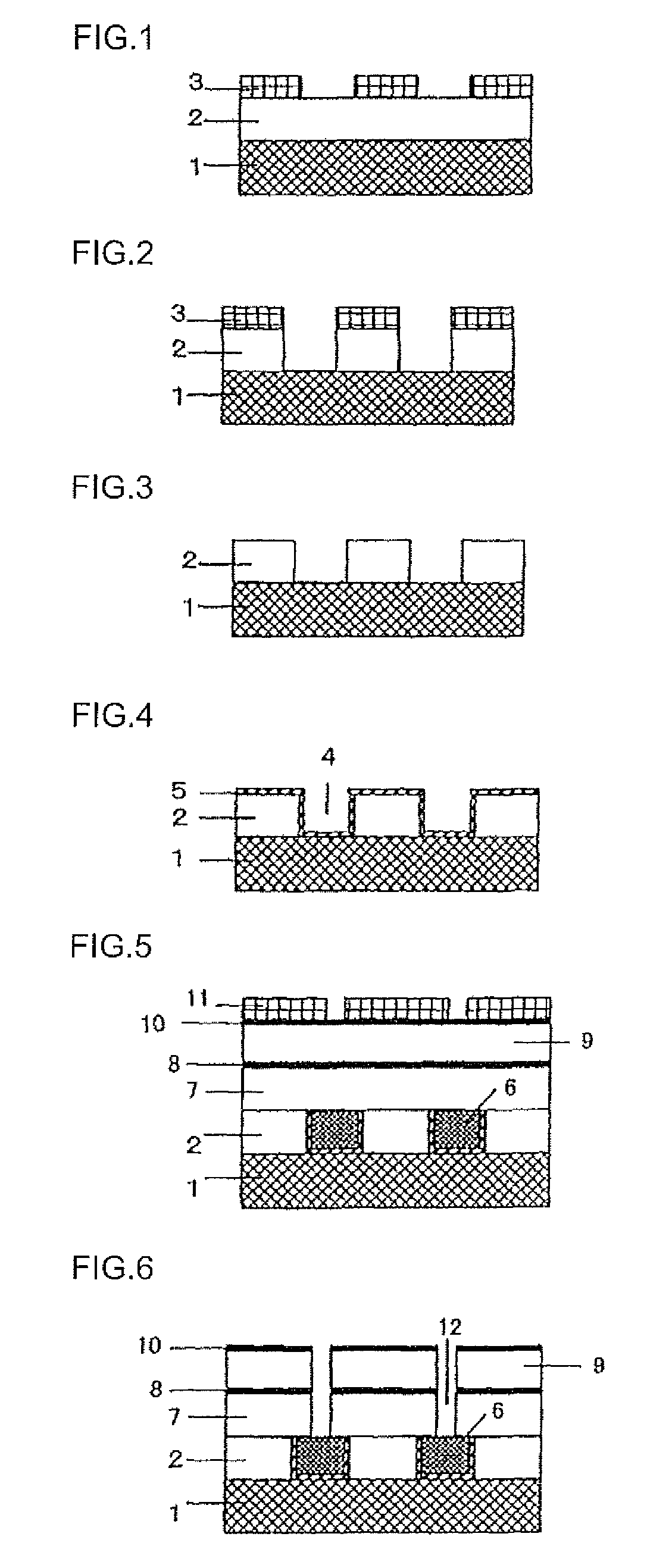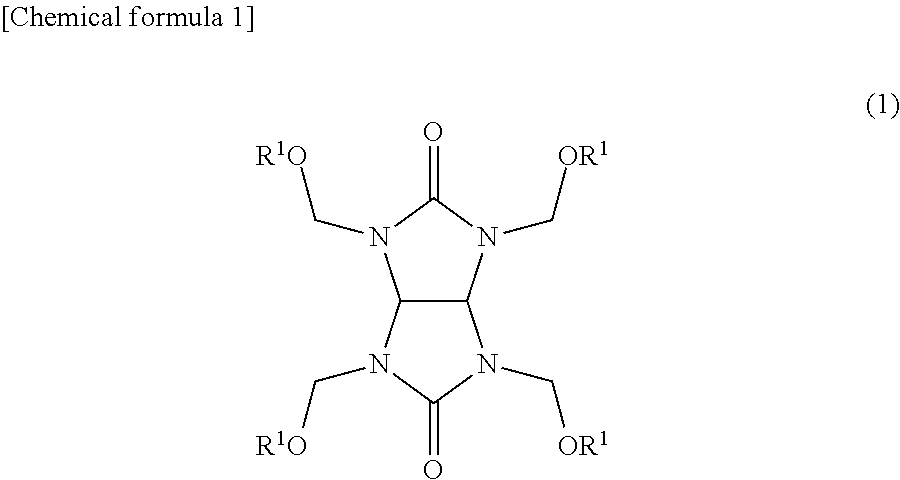Composition for forming resist lower layer film
a technology of resist and lower layer film, applied in the field of composition for forming resist lower layer film, can solve the problems of inability to give a composition capable, insufficient filling of both holes and trenches, and inability to effectively prevent the staining of the film formation apparatus used
- Summary
- Abstract
- Description
- Claims
- Application Information
AI Technical Summary
Benefits of technology
Problems solved by technology
Method used
Image
Examples
synthetic example 1
Synthesis of Polymer (A-1)
[0161]Into a separable flask provided with a thermometer were fed, in a nitrogen atmosphere, 8 parts of acenaphthylene, 4 parts of 5-hydroxymethylacenaphtylene, 50 parts of n-butyl acetate and 4 parts of azobisisobutyronitrile. Polymerization was conducted at 80° C. for 7 hours with stirring. Then, the reaction solution was diluted with 100 parts of n-butyl acetate, and the organic layer was washed with a large amount of water / methanol (mass ratio=1 / 2) mixed solvent. Then, the solvent was distilled off to obtain a polymer (A-1) having an Mw of 1,000.
synthetic example 2
Synthesis of Polymer (A-2)
[0162]Into a separable flask provided with a thermometer were fed, in a nitrogen atmosphere, 5 parts of acenaphthylene, 5 parts of 4-hydroxymethylstyrene, 48 parts of n-butyl acetate and 4 parts of azobisisobutyronitrile. Polymerization was conducted at 75° C. for 7 hours with stirring. Then, the reaction solution was diluted with 100 parts of n-butyl acetate, and the organic layer was washed with a large amount of water / methanol (mass ratio=1 / 2) mixed solvent. Then, the solvent was distilled off to obtain a polymer (A-2) having an Mw of 1,200.
synthetic example 3
Synthesis of Polymer (A-3)
[0163]Into a separable flask provided with a thermometer were fed, in a nitrogen atmosphere, 100 parts of 2,7-dihydroxynaphthalene, 100 parts of propylene glycol monomethyl ether acetate and 50 parts of paraformaldehyde, followed by addition of 2 parts of oxalic acid. The mixture was heated to 120° C. with dehydration, to conduct a reaction for 5 hours. Then, the reaction solution was diluted with 100 parts of n-butyl acetate, and the organic layer was washed with a large amount of water / methanol (mass ratio=1 / 2) mixed solvent. Then, the solvent was distilled off to obtain a polymer (A-3) having an Mw of 1,500.
PUM
| Property | Measurement | Unit |
|---|---|---|
| glass transition temperature | aaaaa | aaaaa |
| pore diameter | aaaaa | aaaaa |
| temperature | aaaaa | aaaaa |
Abstract
Description
Claims
Application Information
 Login to View More
Login to View More - R&D
- Intellectual Property
- Life Sciences
- Materials
- Tech Scout
- Unparalleled Data Quality
- Higher Quality Content
- 60% Fewer Hallucinations
Browse by: Latest US Patents, China's latest patents, Technical Efficacy Thesaurus, Application Domain, Technology Topic, Popular Technical Reports.
© 2025 PatSnap. All rights reserved.Legal|Privacy policy|Modern Slavery Act Transparency Statement|Sitemap|About US| Contact US: help@patsnap.com



